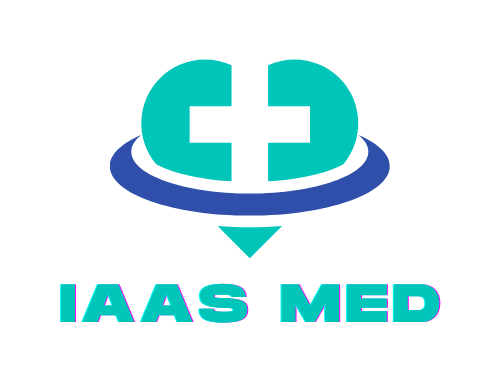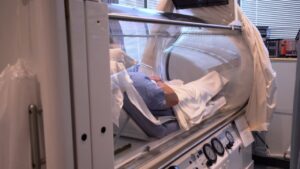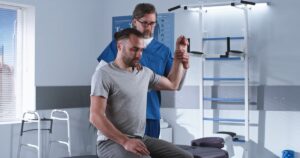Earning a medical license in the U.S. is a long and highly regulated process that typically takes 11 to 15 years from the beginning of undergraduate education to full licensure.
This path includes college, medical school, standardized exams (USMLE), residency training, and satisfying strict state-specific licensing requirements.
According to the Association of American Medical Colleges (AAMC), the average age of newly licensed physicians in the U.S. is around 30 years old, and over 80% of new doctors finish the process with six-figure student debt.
Despite the challenges, the structure is designed to ensure that physicians are highly trained, professionally competent, and ethically grounded before entering independent clinical practice.
1. Earn a Bachelor’s Degree

The journey to becoming a licensed physician in the United States starts with obtaining a bachelor’s degree, typically completed over four years.
Medical schools require candidates to have completed coursework in core scientific disciplines, but they do not mandate a specific undergraduate major.
Most students choose Biology, Chemistry, Biochemistry, or Neuroscience as their focus, primarily because these subjects align well with the standard medical school prerequisites.
Typical required courses include:
- One year of biology with lab
- One year of general chemistry with lab
- One year of organic chemistry with lab
- One year of physics with lab
- Mathematics (calculus or statistics)
- English or composition courses
In addition to maintaining a strong GPA – 3.7 or higher for most top medical schools, students are encouraged to engage in volunteering, clinical shadowing, leadership roles, and academic research. These activities demonstrate a genuine interest in medicine and build a well-rounded profile.
During this period, students might also explore related healthcare careers, such as nursing or allied health roles.
For those considering more flexible or non-physician clinical routes, part-time FNP programs (Family Nurse Practitioner programs) offer a graduate-level path to clinical practice with an emphasis on patient care, particularly in family and community settings.
However, the physician path remains distinct in terms of training length, licensing complexity, and autonomy.
2. Take the Medical College Admission Test (MCAT)
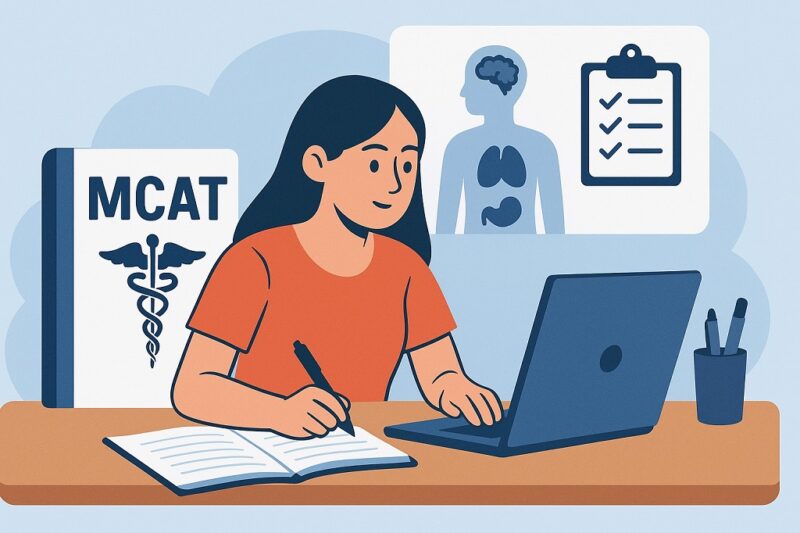
The MCAT is a seven-and-a-half-hour standardized test required by nearly all U.S. medical schools. It evaluates both your scientific understanding and your reasoning skills, spanning the following four sections:
- Biological and Biochemical Foundations of Living Systems
- Chemical and Physical Foundations of Biological Systems
- Psychological, Social, and Biological Foundations of Behavior
- Critical Analysis and Reasoning Skills (CARS)
Most pre-med students begin preparing 6 to 9 months before their intended test date, investing hundreds of hours in review and practice exams. A score of 510–515 is generally considered competitive.
While the test is scored on a scale of 472–528, it’s the composite and section scores that schools evaluate when making admissions decisions.
A good MCAT score can greatly enhance an application, even compensating for a slightly lower GPA in some cases.
3. Apply and Gain Admission to Medical School

Medical school admissions are notoriously competitive. For the 2023–2024 cycle, over 55,000 applicants competed for about 22,000 spots in MD programs alone.
Applications are submitted via centralized services like AMCAS (for MD) and AACOMAS (for DO). These platforms require:
- MCAT scores
- Official college transcripts
- A personal statement (about 5,300 characters)
- Letters of recommendation (usually 3 to 5)
- A detailed list of work, research, and volunteer experiences
After submitting primary applications, students must complete secondary applications – custom essays required by individual schools. They may ask about specific interests in the institution, diversity, community service, or career goals.
Finally, selected applicants are invited to interviews, which may be traditional or multiple mini interviews (MMI). Medical schools look for candidates who show academic excellence, interpersonal maturity, cultural competence, and dedication to medicine.
4. Complete Four Years of Medical School
Once admitted, students enter a rigorous four-year medical program divided into two main phases: pre-clinical and clinical training.
Years 1–2: Pre-Clinical
- Focus on classroom instruction
- Topics: anatomy, physiology, pharmacology, biochemistry, immunology
- Introduction to basic clinical skills and patient communication
Years 3–4: Clinical Rotations
- Hands-on experience in hospitals and clinics
- Core rotations include:
- Internal Medicine
- Surgery
- Pediatrics
- Obstetrics/Gynecology
- Psychiatry
- Family Medicine
Students must pass USMLE Step 1 (taken at the end of Year 2), which tests knowledge of basic sciences and is now scored pass/fail. In Year 4, students take USMLE Step 2 CK, a numerically scored exam focusing on clinical knowledge and patient management.
This is also when students begin preparing for residency applications.
5. Apply for Residency via the Match

The final year of medical school is focused on securing a residency position, a mandatory training phase required for medical licensure and board certification. Students use the Electronic Residency Application Service (ERAS) to apply to programs and participate in the National Resident Matching Program (NRMP).
Through this process, students and programs rank each other, and a computer algorithm matches applicants to positions on Match Day in March.
In 2024:
- 44,000+ applicants competed for 40,000+ positions
- 93.8% of U.S. MD seniors matched successfully
- Unmatched applicants can apply through SOAP (Supplemental Offer and Acceptance Program)
Residency programs vary by specialty and competitiveness. For example, dermatology, orthopedic surgery, and ENT are among the most competitive, while family medicine and internal medicine offer more accessible entry points for many students.
6. Complete Graduate Medical Education (Residency)

Residency is where physicians gain supervised, hands-on experience in their chosen specialty. This phase lasts anywhere from 3 to 7 years, depending on the discipline.
During this period, residents are paid modest salaries (averaging $62,000 per year in 2024) and often work 60–80 hours per week, including night shifts, weekends, and 24-hour call.
Typical residency durations:
| Specialty | Duration (Years) |
| Family Medicine | 3 |
| Internal Medicine | 3 |
| Pediatrics | 3 |
| Emergency Medicine | 3–4 |
| General Surgery | 5 |
| Neurosurgery | 7 |
In residency, trainees rotate through sub-specialty areas, manage real patients, participate in didactic sessions, and gradually assume more responsibility.
Most physicians take the USMLE Step 3 during their first or second year of residency, setting the stage for full licensure.
7. Pass the USMLE Step 3
Step 3 is the final exam in the United States Medical Licensing Examination (USMLE) series. It assesses a physician’s ability to apply clinical knowledge and decision-making skills in unsupervised practice. The two-day exam includes:
- Multiple-choice questions on diagnosis, management, and epidemiology
- Case-based simulations that test your ability to respond to evolving patient scenarios
Step 3 is usually taken during PGY-1 or PGY-2 (Post-Graduate Year 1 or 2) and is required to obtain an unrestricted medical license in most U.S. states. According to the NBME, the pass rate for U.S. MD graduates in 2023 was 97%, underscoring the importance of solid clinical training.
8. Apply for State Medical Licensure
Each U.S. state requires physicians to apply for licensure through their state medical board. There is no national license, so if you wish to practice in multiple states, you must go through each board’s process. While requirements vary, most states ask for:
- Verification of your MD or DO degree
- Proof of completed residency training
- USMLE Step 1–3 scores
- Background checks and fingerprinting
- Application fees ($400–$1,000)
Processing times range from 4 to 12 weeks, depending on the state. Some states participate in the Interstate Medical Licensure Compact (IMLC), which can expedite licensing for physicians applying in multiple participating states.
9. Register for a DEA Number and an NPI
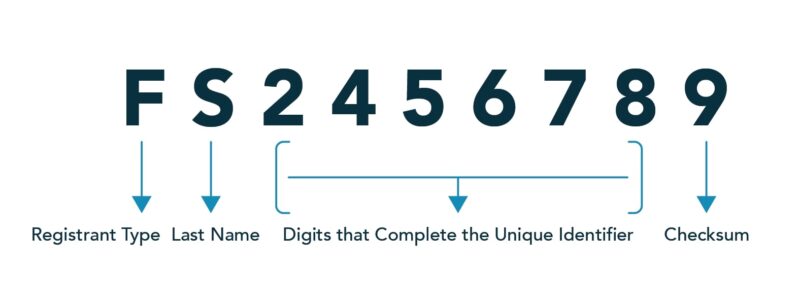
Once state licensure is granted, you need additional federal identifiers to begin practicing independently.
The DEA (Drug Enforcement Administration) registration allows you to prescribe controlled substances such as pain medications, stimulants, and sedatives.
DEA requirements include:
- Valid state license
- Office or hospital address
- Fee of $888 for a 3-year term
You must also obtain an NPI (National Provider Identifier) from CMS, which is used in medical billing and insurance processing.
Both credentials are standard for all practicing physicians, and failure to maintain them can delay or halt clinical work and reimbursement.
10. Maintain License Through CME and Periodic Renewal
Medical licensure is not a one-time process. To maintain your license, you must complete Continuing Medical Education (CME) each year or renewal cycle.
CME requirements vary by state, but most range from 20 to 50 hours annually.
Typical CME topics include:
- Clinical advances in your specialty
- Medical ethics and professionalism
- Pain management and opioid prescribing
- State law updates and compliance
Physicians must renew their license every 1 to 3 years, depending on state regulations. Failure to do so results in penalties, suspension, or license expiration.
Many doctors also pursue board certification and maintenance of certification (MOC) through specialty boards such as the ABIM (Internal Medicine) or ABFM (Family Medicine).
Conclusion
Getting a medical license in the U.S. is not something that happens quickly or casually – it’s a rigorous, multi-phase process that typically takes over a decade from the start of college to the point of full, independent practice.
You’ll need to complete a four-year degree, excel on the MCAT, get into and graduate from medical school, match into a residency, pass all three steps of the USMLE, and meet your state’s licensure requirements.
Along the way, you’ll work long hours, spend years under supervision, and invest deeply – financially, mentally, and emotionally.
But here’s the concrete bottom line: if your goal is to become a fully licensed physician in the U.S., there are no shortcuts – these 10 steps are the real path.
They’re not just bureaucratic boxes to check; they exist to ensure that every doctor is fully prepared to make life-and-death decisions with confidence, competence, and ethical grounding.
Related Posts:
- Unlock Your Potential: 6 Steps to Start Your Career…
- Healthcare Careers with High Earning Potential - Top…
- How to Calm a Scared Child Before a Medical Test or…
- What Is the Altemeier Procedure for Anastomosis? -…
- Signs of Parasitic Infections - 10 Key Symptoms Explained
- Can Hernias Affect Your Back? 9 Key Facts to Know
